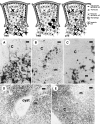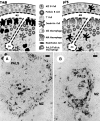Neurotrophins and the immune system
- PMID: 12892403
- PMCID: PMC1571144
- DOI: 10.1046/j.1469-7580.2003.00203.x
Neurotrophins and the immune system
Abstract
The neurotrophins are a family of polypeptide growth factors that are essential for the development and maintenance of the vertebrate nervous system. In recent years, data have emerged indicating that neurotrophins could have a broader role than their name might suggest. In particular, the putative role of NGF and its receptor TrkA in immune system homeostasis has become a much studied topic, whereas information on the other neurotrophins is scarce in this regard. This paper reviews what is known about the expression and possible functions of neurotrophins and their receptors in different immune tissues and cells, as well as recent data obtained from studies of transgenic mice in our laboratory. Results from studies to date support the idea that neurotrophins may regulate some immune functions. They also play an important role in the development of the thymus and in the survival of thymocytes.
Figures




References
-
- Abramchik SS, Yermakova VN, Kaliunov RM, Tanina RM, Tumilovich MK. The immunomodulatory effect of nerve growth factor. J. Neurosci. Res. 1988;19:349–356. - PubMed
-
- Aloe L, Levi-Montalcini R. Mast cell increase in tissues of neonatal rats injected with the nerve growth factor. Brain Res. 1977;133:358–366. - PubMed
-
- Aloe L. The effect of nerve growth factor and its antibody on mast cells in vivo. J. Neuronimmunol. 1988;18:1–12. - PubMed
-
- Aloe L, De Simone R. NGF primed spleen cells injected in brain of developing rats differentiate into mast cells. Int. J. Dev. Neurosci. 1989;7:565–573. - PubMed
-
- Aloe L, Tuveri MA, Carcassi U, Levi-Montalcini R. Nerve growth factor in the synovial fluid of patients with chronic arthritis. Arthritis Rheumatism. 1992;35:351–355. - PubMed
Publication types
MeSH terms
Substances
LinkOut - more resources
Full Text Sources
Other Literature Sources
Medical

